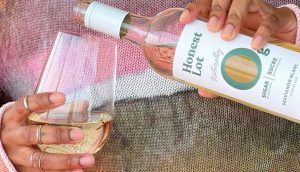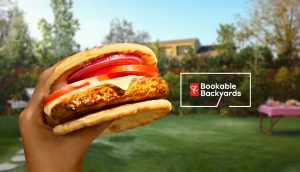As influencer marketing enters a new stage of maturation, a new term has begun to rise: micro-influencer. A new global study by blog platform Bloglovin’ has given insights into their attitudes towards brand partnerships.
Micro-influencers, defined as creators on social platforms such as Instagram, YouTube, Tumblr and others that have followers somewhere in the four-figure mark (as opposed to the six and seven figures Canadian social stars Lilly Singh and Epic Meal Time have earned).
Bloglovin’s survey comes less than one week after research by Environics that showed Canadians’ trust in influencers is dropping slightly, which the company attributed to a rise in the number of branded campaigns.
Some in the industry say these small-scale creators may play a key part in that trend, as they recognize the viability of blogging and creating social content as a means of income, creating a competition for brand dollars that results in too many collaborations.
But the Bloglovin’ study found that around 45% of influencers have not done a brand collaboration in the past year, and an additional 25% have only done between one and five. An additional 16% have done between five and 10, and the remaining 14% have done more than 10. (An earlier 2017 study by Influence Central, which looked primarily at the mid- to high-level influencers, showed that the average Canadian influencer engaged in 16 branded campaigns per year.)
Only 25% of Bloglovin’s influencers believed brands had a realistic idea of what campaigns should cost. On Instagram, the vast majority of influencers (84%) charge less than $250 per branded post. That metric is similar across blogs (87%), Facebook (90%) and Twitter (90%).
Bloglovin’ surveyed 2,500 influencers from its own network (which encompasses creators from all platforms). Approximately one tenth of respondents were Canadian. A total of 95% were women, and all fell within the ages of 18 and 45.
In terms of their followings, most of the influencers surveyed had fewer than 1,000 followers per platform. On blogs, about 1,500 creators said they had fewer than 1,000 followers, while 600 boasted between 1,000 and 5,000. Another 200 had between 5,000 and 10,000 followers, and a small number had more than 10,000. Similar figures appeared across Facebook, Twitter and Pinterest.
Instagram, however, showed a slightly different balance. Less than 1,100 respondents said they had fewer than 1,000 followers, the least of any other platform. More than 500 said they had between 1,000 and 5,000 followers, 200 had between 5,000 and 10,000 and 150 had between 10,000 and 20,000.
It’s unsurprising, given the larger follower numbers on the platform, that Instagram was the reported go-to spot for original content, with 80% of respondents saying they post on the photo and video site. When asked which platform they thought was the most effective one for engaging followers, 59% chose Instagram. The platform also attracted influencers from multiple verticals, including 77% of fashion influencers and 31% of entertainment and pop culture influencers, which Bloglovin’s researchers stated is an indication that the platform should be important for brands.
WordPress came in second in terms of micro-influencer usage, with just under 50%. In total, blog-specific platforms (WordPress, Blogspot, Tumblr, Medium and Squarespace) made up 89% of micro-influencers’ platforms. Just under 40% used Snapchat, however less than 5% believed it was an effective tool in engaging audiences, making it the least popular.
Brand Fans
The study also looked at the influencers as users and consumers to examine which brands they liked to engage with most. Fast fashion line H&M was the most popular at 35.5%, edging out beauty retailer Sephora by only 0.5%. Bloglovin’ determined that “mass brands” are more popular than luxury brands (the top 10 also included fashion retailers Zara, Anthropologie and Topshop, as well as drugstore makeup line NYX), but some luxury brands such as Benefit, MAC and Free People have also gained appeal by “[demonstrating] the right content mix of aspirational and relatable” content.
Influencers also tended to remember and enjoy campaigns that had social causes behind them — of the four most-mentioned campaigns, three centered around social responsibility or self-esteem (Tom’s “Shoes for Tomorrow” campaign, Dove’s “I am Beautiful” campaign and Aerie’s “Make Me Real”).
























